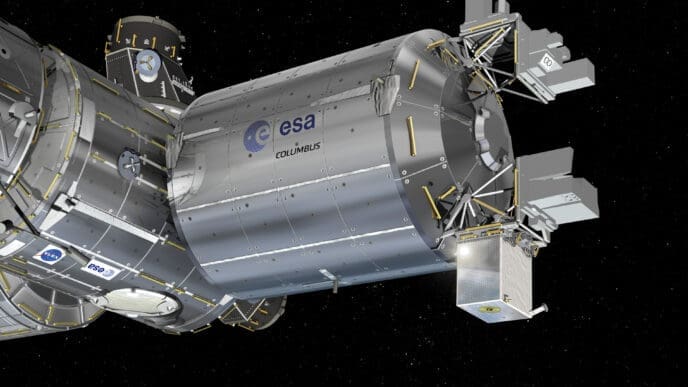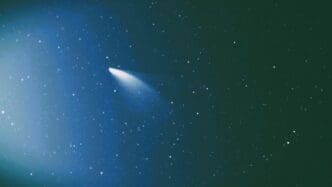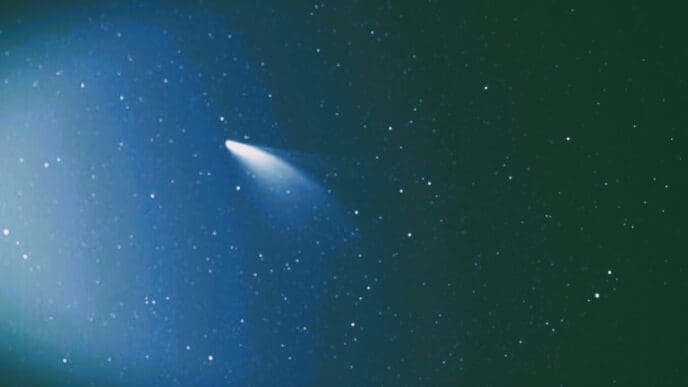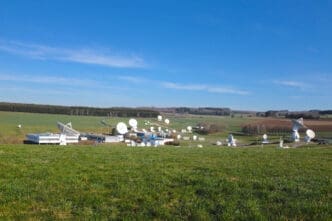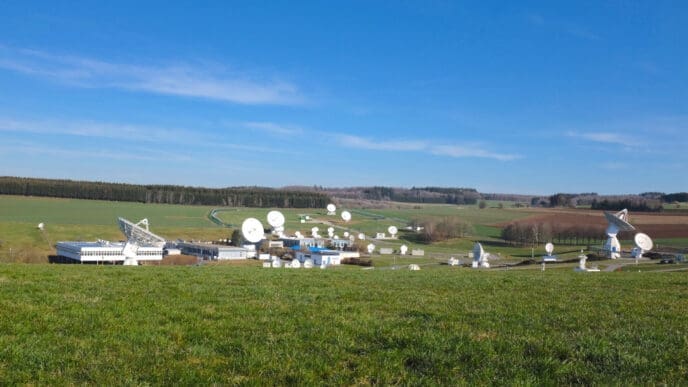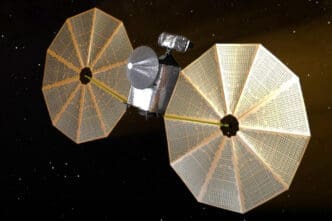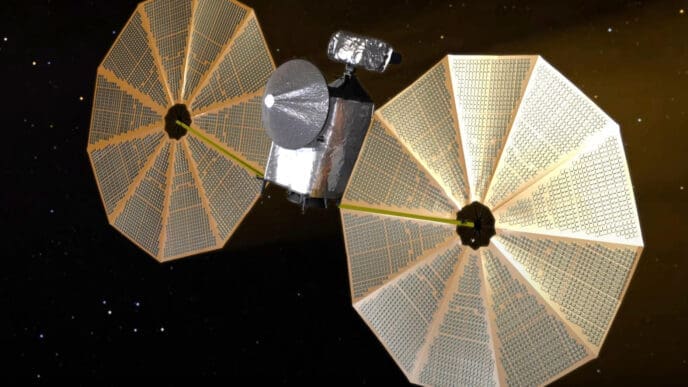Way out in the cosmos, about 60 million light-years away in Ursa Major, the Hubble Telescope captured an intriguing glimpse of UGC 5460. It’s not just any spiral galaxy—this one holds secrets. Two recent supernovae drew NASA’s interest here, particularly SN 2011ht, which might not be what it seems. Delve into this cosmic intrigue as we uncover more.
Spirals are a common sight in space, but UGC 5460, with its bright blue star clusters and central bar, tells a story that’s yet to unfold. With a neighboring star much closer to home, Hubble’s snapshots weave a tale of cosmic wonders and possible deceptions. Join us as we explore the mysteries captured in these images.
A Glimpse into UGC 5460
Hubble’s image of UGC 5460 is a stunning cosmic tapestry. Located in the constellation of Ursa Major, it’s 60 million light-years away and shines beautifully. This image is a combination of four light wavelengths, showcasing its star-studded central bar and spiral arms. A bright star nearby in our galaxy adds a striking contrast.
The galaxy attracts attention not just for its beauty but for hosting two notable supernovae. This makes it a point of study for those interested in these explosive events in the universe. The image serves as a window into the past, offering insights into the life cycle of stars.
Unraveling Luminous Blue Variables
Luminous blue variables are not your average stars. They’re so massive and unstable that they undergo colossal eruptions. These outbursts are powerful enough to mimic a supernova’s brightness, yet different enough to survive.
Hubble aims to find out if SN 2011ht is a luminous blue variable by searching for the star that survived the explosion. This discovery would shed light on these fascinating cosmic objects and their true nature.
The data collected so far points to unresolved questions about these stars. What makes them erupt, and how do they survive? The goal is to unveil these secrets and compare them to typical supernovae. Hubble’s precision is key to this investigation.
Observing Supernovae in Detail
Supernovae are among the most energetic events in the universe. Hubble’s observations contribute significantly to our understanding of these stellar explosions. By capturing the aftermath of SN 2015as, Hubble provides data crucial for analyzing shockwave interactions.
The expanding shell of material observed offers clues about the environment around the original star. This information helps scientists create better models of stellar deaths and explore the mechanics behind these massive explosions.
The comprehensiveness of Hubble’s images is where its strength lies. With each detail, scientists refine their theories and expand their knowledge on how stars evolve and perish in spectacular fashion.
A Star much Closer to Home
In the same image where a distant galaxy is featured, a star just 577 light-years away can be seen. This close proximity astonishes many, drawing a parallel between the comprehensiveness of studying close and distant celestial objects simultaneously.
This duality in the frame reminds us how diverse the universe is. What might seem to be a solitary galaxy snapshot turns out to be a layered cosmic story.
Such images from Hubble enrich our astronomic narratives by bringing stars near and far together in one view. Each provides its piece in the cosmic puzzle.
What Lies Ahead for Astronomers?
The future holds many more discoveries as Hubble continues its cosmic tour. Studying these massive celestial events reveals much about the life cycles of stars and galaxies.
Each finding enhances our understanding and might even change paradigms about cosmic phenomena. Astronomers remain keenly interested in what Hubble can uncover next.
The telescope’s mission is far from over. As it gathers more data, we can expect to further unravel the mysteries of the universe. Every piece of information is a step closer to understanding our cosmic origins.
UGC 5460 presents a cosmic mystery captured beautifully by Hubble. As astronomers continue to probe this spiral galaxy and its supernovae, each finding adds to our understanding of the universe. The journey of discovery is ongoing, leaving us eager to learn what cosmic secrets will be unveiled next.




